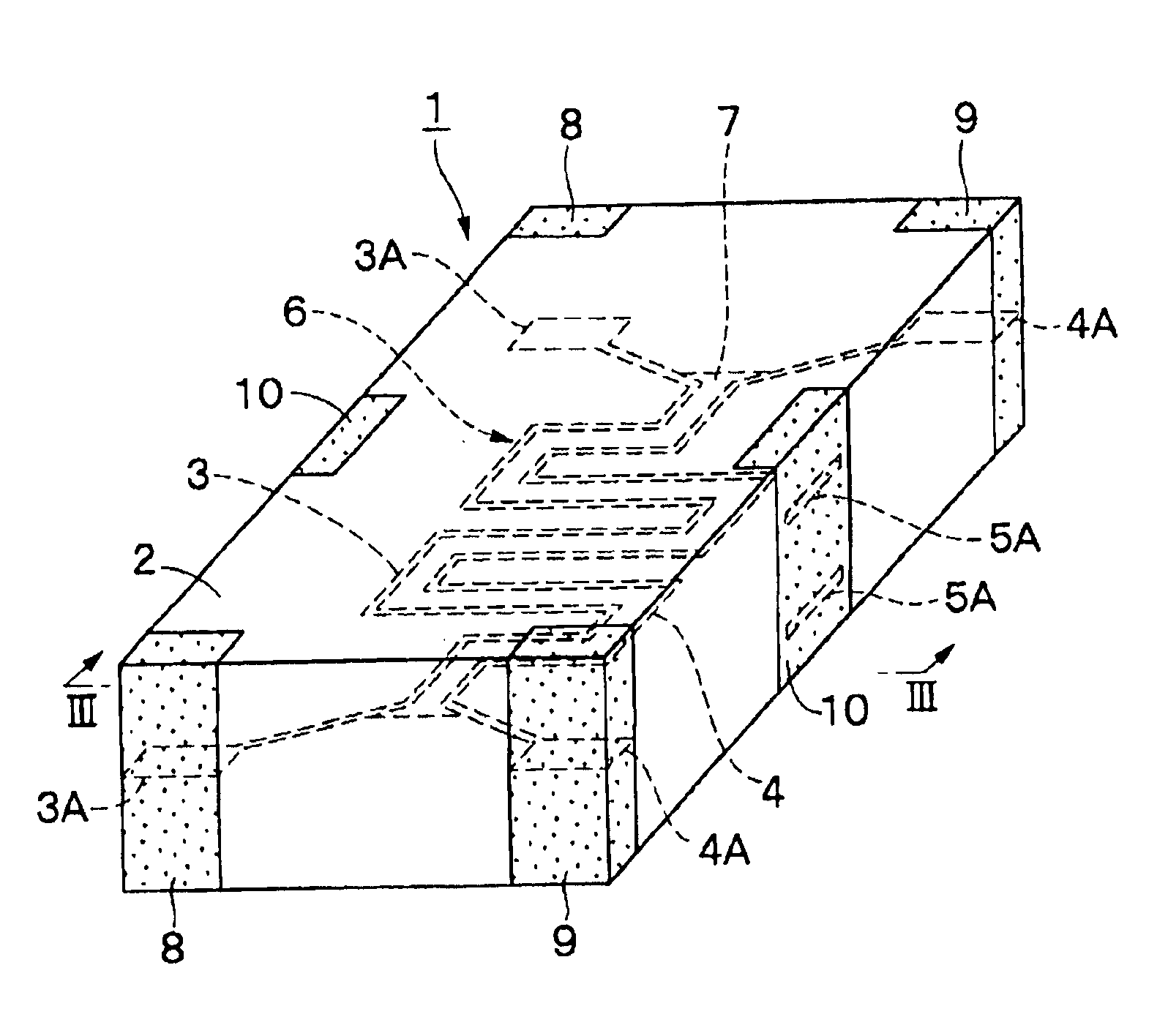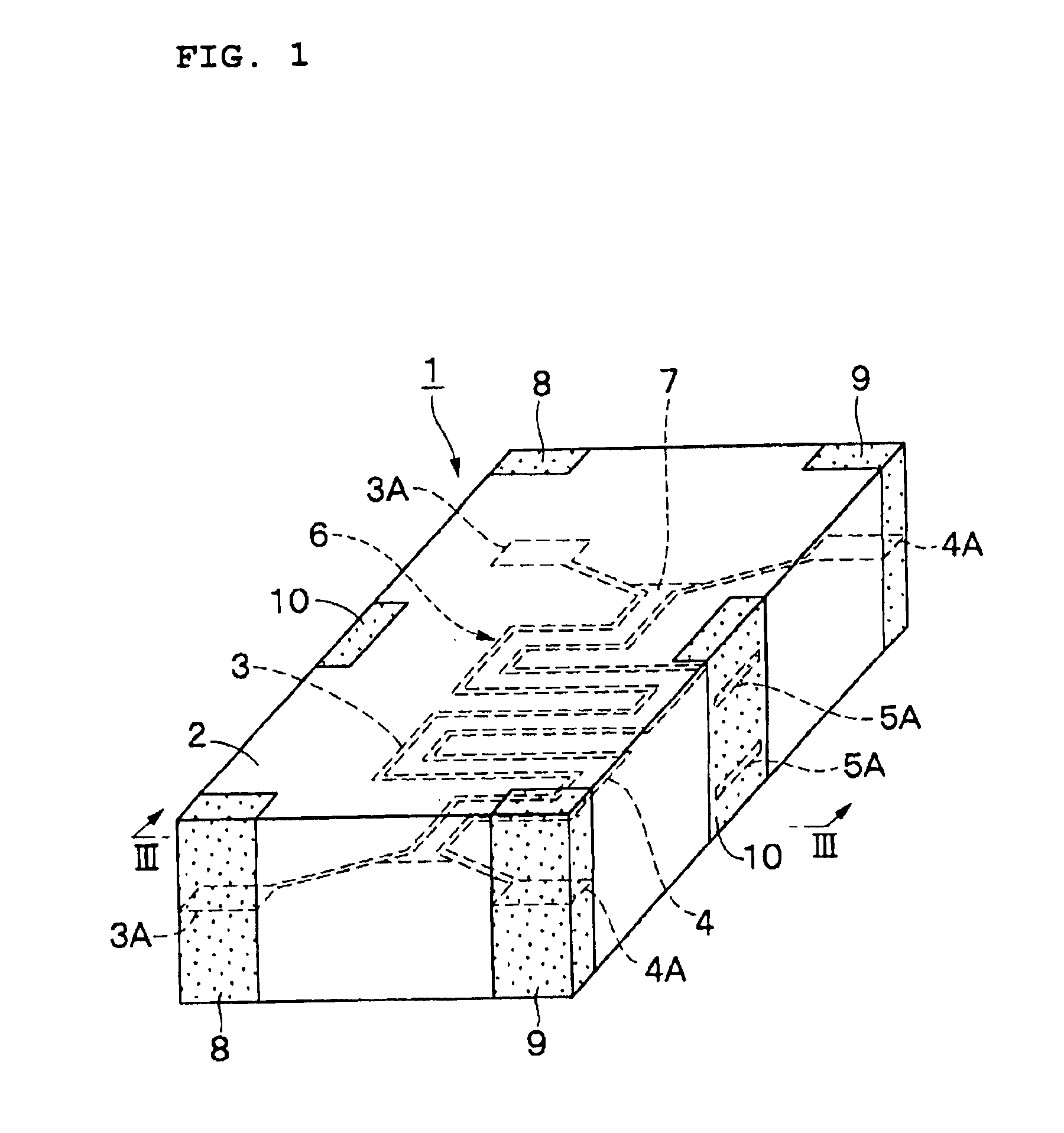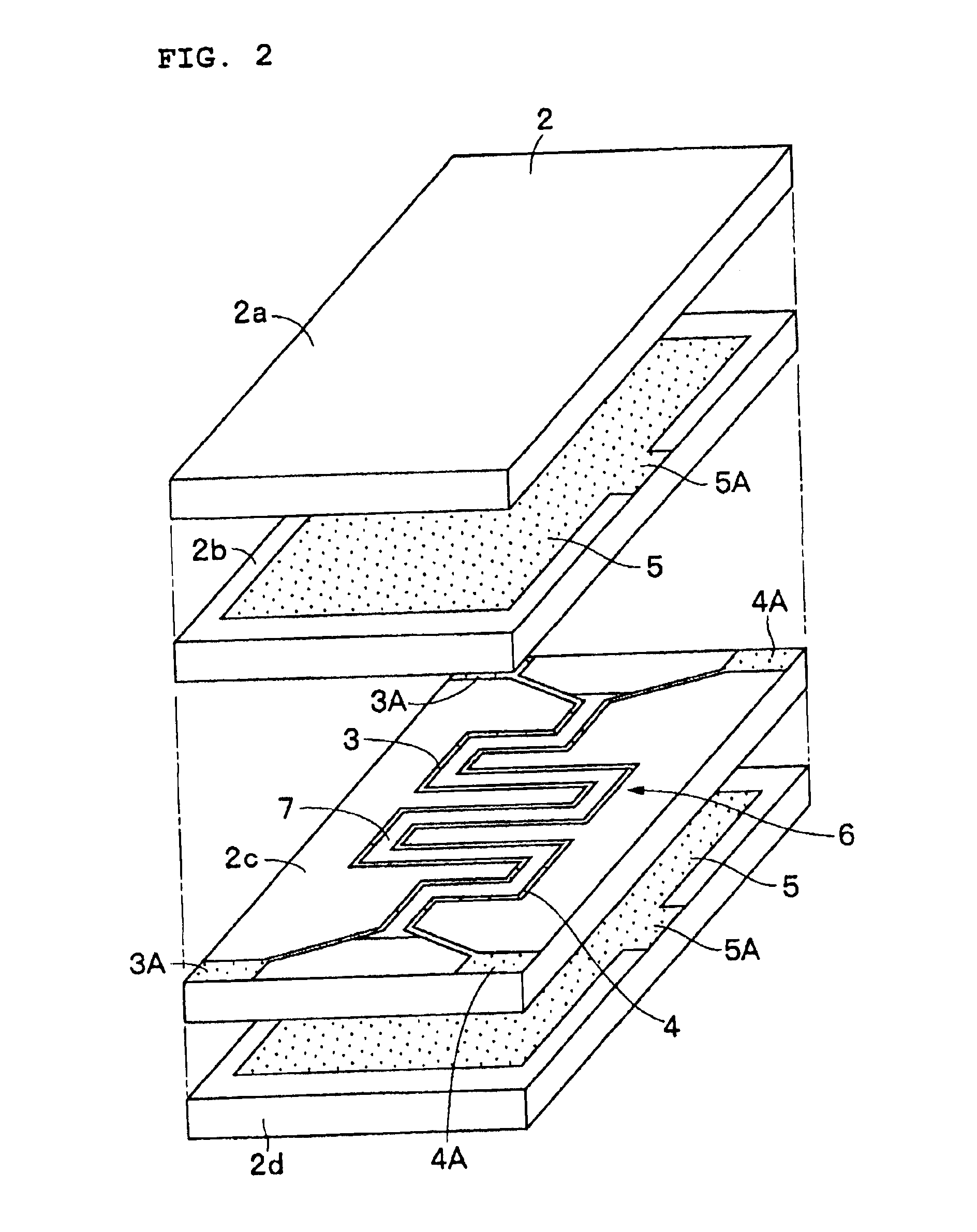Noise filter
a noise filter and noise technology, applied in the field of noise filters, can solve the problems of increasing the frequency of common-mode noise, increasing the noise despite the noise filter, and radiation of electromagnetic noise, and achieve the effect of preventing resonance nois
- Summary
- Abstract
- Description
- Claims
- Application Information
AI Technical Summary
Benefits of technology
Problems solved by technology
Method used
Image
Examples
Embodiment Construction
The present invention is described in detail below with reference to the accompanying drawings through illustration of preferred embodiments.
A noise filter 1 according to a first preferred embodiment of the present invention is described below with reference to FIGS. 1 through 9.
The noise filter 1 includes magnetic layers 2a through 2d, signal lines 3 and 4, ground electrodes 5, a dielectric member 7, signal electrode terminals 8 and 9, and ground electrode terminals 10, which are described below.
The magnetic layers 2a through 2d define a laminated unit 2 preferably having the shape of a prism, which serves as an insulating medium to define the outer shape of the noise filter 1. The magnetic layers 2a through 2d, which serve as insulating layers, are formed by laminating four magnetic sheets and then by pressing and firing them. The magnetic layers 2a through 2d are preferably formed in the shape of a flat quadrilateral by using a ceramic material (magnetic material) which exhibits ...
PUM
 Login to View More
Login to View More Abstract
Description
Claims
Application Information
 Login to View More
Login to View More - R&D
- Intellectual Property
- Life Sciences
- Materials
- Tech Scout
- Unparalleled Data Quality
- Higher Quality Content
- 60% Fewer Hallucinations
Browse by: Latest US Patents, China's latest patents, Technical Efficacy Thesaurus, Application Domain, Technology Topic, Popular Technical Reports.
© 2025 PatSnap. All rights reserved.Legal|Privacy policy|Modern Slavery Act Transparency Statement|Sitemap|About US| Contact US: help@patsnap.com



